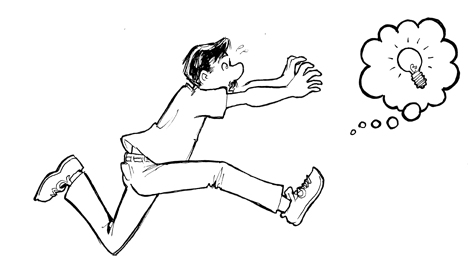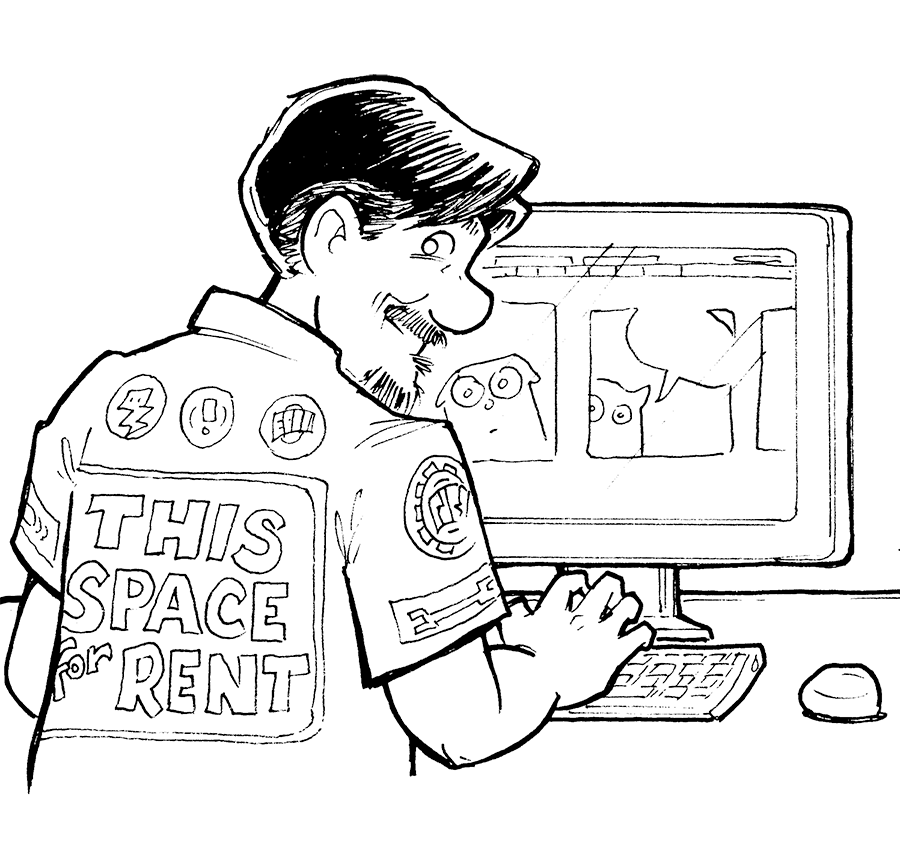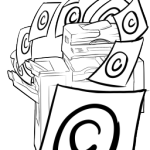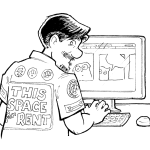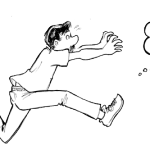Buying advertising for your comic is a tempting proposition for many independent cartoonists. After all — you need to get your work in front of more people, and sometimes it seems as if social media just isn’t delivering the way it was promised. But before you reach for your wallet, consider a few things.
Do you have the right tools?
The largest problem with paid advertising is that you probably don’t have the skill set — or the budget to do it properly. An effective ad campaign for a comic should feature the following:
- A knowledge and understanding of the people most likely to become new readers
- A carefully crafted message targeted at a specific group of people within that potential audience base
- Information regarding where those people are likely to be when they spend time on the Web — and when they’re there.
- A budget large enough to saturate the targeted message to the potential audience often enough to achieve the repeated exposure required to get them to consider clicking.
If you don’t have all four, you risk wasting a significant amount of money on advertising that doesn’t deliver. For example, let’s focus on the target audience. If your first instinct is to advertise on other comics websites because you want to reach “people who like comics,” then you’re definitely the sort of person who should not spend money on advertising.
Does McDonald’s advertising say: “Do you like food?” An advertising outreach based on “do you like comics?” would be just as ham-handed for a cartoonist.
Realistically, an effective advertising campaign involves a level of research that most of us simply can’t afford. And without that data, we’re taking scatter shots into the dark — hoping to hit something.
“I miss Project Wonderful”
Project Wonderful folded in 2018, and the reason that it was taken offline was the second reason I advise people against buying advertising: The economy around online ads has collapsed. Ad blockers were the beginning of the death knell. As special software was developed to strips website of their advertising, the prices web publishers could earn for hosting ads dropped. This lead to an increase in aggressive advertising that blocked large portions of the site itself — even hijacking the site momentarily. But, caught in a money pinch, publishers displayed them because they paid higher prices. This shortsightedness became a huge surge for social media, as people — disgusted with aggressive ads — found more favorable places to get their information and entertainment. Many web publishers — including, but not limited to webcomics — shifted to crowdfunding. Success in crowdfunding often lead websites to strip all ads completely.
And that’s the market you want to purchase ad space in.
Buying ad space on social media — or “promoting posts” — would seem to be an alternative. Until you read a little more on the topic.
Is your advertising effective?
Several people have sent me their analytics pointing to sizable influxes of traffic coinciding with ad buys. They point excitedly to the upswings. “See? It works!” they insist. My response is to apply a simple test: Stop buying advertising. If the traffic drops to pre-advertising levels, then your ad buys have failed. Why? Because you failed to retain any of those new people your advertising directed to your comic. (And that’s likely because of a breakdown in the four features we discussed at the very beginning of this post.)
It’s simple, if your advertising were effective, your site traffic wouldn’t plummet every time the ads stop appearing. That’s because if they were effective, your traffic would find a new, lower level — to be sure — but it would be higher than the pre-advertising levels.
So… social media?
I think we’re nearing the end of the Social Media Age of the Internet. Social media networks don’t deliver the same levels of engagement that they once did. However, before you become yet another disgruntled creator moaning about “The Algorithm,” I want to share a thought with you:
What if I told you that the social-media algorithm is your friend? Would you think I was crazy? Pull up a chair.
Your followers don’t want every message you send
Here’s the dirty little secret that you may not want to accept: Your readers aren’t interested in reading every message you send. I know that you tell yourself otherwise. After all, why else would they have “liked” your page? Why else are they following you — if not to receive a steady stream of your dedicated messaging?
But they don’t. And — truly — that’s not what they signed up for.
What they want is to hear from you sometimes — and preferably when it’s important to them.
Stop. Read that sentence again.
e-Newsletters
I’m a strong proponent of e-mail newsletters and building newsletter lists. (And I think they’ll factor prominently on the post-social-media Web.) But let’s talk realistically about their engagement. According to MailChimp, the average open rate for e-mailed outreach in the Arts and Artists category during October 2019 was about 26%. (A slight tick higher than the average of 25%.) And the click rate was 2.9%.
In other words, when people actively sign up to receive a steady stream of your messaging, they open the e-mails only about a quarter of the time. And then they only click on links inside those e-mails (Kickstarters, Patreon, merchandise) about 3% of the time.
They are actively making choices that are very similar to the choices that social-media algorithms are making on their behalf.
They don’t want your lazy messaging
Readers want to hear from you sometimes — and preferably when it’s important to them.
The question is obvious. Are you sending out messages that are important to them?
- “I updated my comic today” is a lazy, uncreative message.
- “Today’s comic is all about xxxxxx” is better.
- “I’m excited about today’s comic because xxxxxxxx” is even better still.
Take a look at your social-media messaging. Are those messages compelling? Do they present an emotional hook for readers and potential readers alike? Did you say anything beyond “here’s another comic”?
Likewise, can your target read the entire comic on social media, or are you forcing them to click a link and read it somewhere else. People, are too busy scrolling to be taken off the platform. They don’t want to click a link. Again, it’s lazy social-media strategy.
These kinds of social-media posts are typically the ones that get the least response. And, as a result, they’re the ones that the algorithm filters to the bottom of the tank immediately. Posts that say something interesting usually garner better engagement, and as a result, those posts are spread more widely. Post with images that are getting clicked on (when a reader opens it to read) indicate engagement to the algorithm.
Social media is frustrating, it’s tiresome, and it’s distracting. Luckily, it’s free. And for a long time now — and for a little while longer, I’m afraid — social media offers the far better choice for promoting and marketing your comic.

